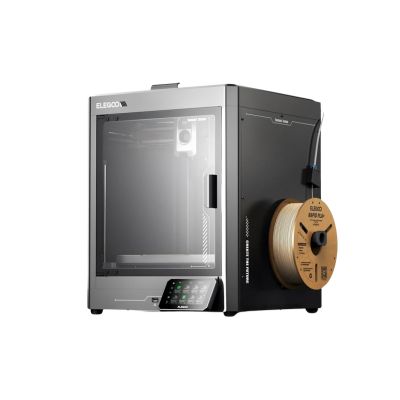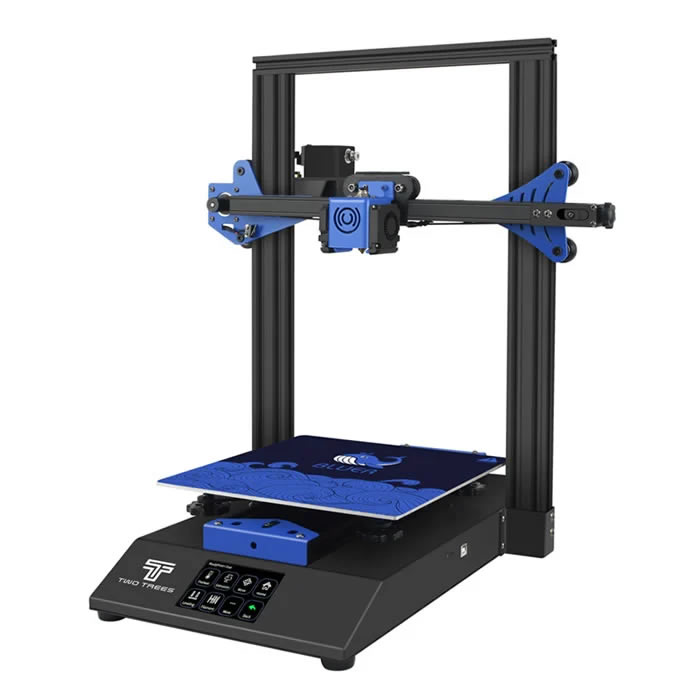Compare Centauri Carbon vs Bluer
Comparison between the best 3D printers
Choose the best 3D printer at the best price. The cheapest 3D printers are here.
Buy a 3D printer here with 3D Fila.
 |
 |
|
| Model | Centauri Carbon |
Bluer |
| Printing Material | Filament | Filament |
| Buy Filament for Elegoo Centauri Carbon | Buy Filament forTwoTrees Bluer | |
| Estimated price | $500,00 | $169,00 |
| Manufacturer | Elegoo | TwoTrees |
| Release Year | 2025 | 2019 |
| Print Volume [mm] | 256x256x256 | 230x230x280 |
| Printer Size [mm] | 500x500x600 | 400x410x520 |
| Weight [kg] | 17,5 | 8 |
| Power Loss Recovery | YES | YES |
| Enclosed printer | YES | NO |
| Bed Leveling | Automatic | Manual |
| Filament End Sensor | YES | YES |
| Bed type | Heated | Heated |
| Power supply system | Direct Drive | Bowden |
| Standard nozzle | 0,4 | 0,4 |
| Maximum Nozzle Temperature [°C] | 300 | 260 |
| Maximum Bed Temperature [°C] | 110 | 100 |
| Maximum printing speed [mm/s] | 500 | 200 |
| Filament holder | YES | YES |
| Camera for supervision | YES | YES |
| Recommended filaments | PLA, PETG, ABS, ASA, TPU, NYLON, CARBON FIBER | PLA, PETG |
| Recommended slicers | Elegoo Slicer, Orca Slicer | Cura, Simplify, Slic3r |
| Maximum Resolution [mm] | 0,1 | 0,1 |
| Processor | MKS Robin Nano V1.2 + TMC2208 | |
| Display | Touchscreen 4,3'' | Touchscreen TFT 3,5'' |
| Power Supply | 350 W | 240W |
| Connectivity | WiFi, SD, USB | SD / USB |
| Operating systems | Windows, Linux e Macbook | Windows, Mac, Linux |
| Date of registration in the system | 2025-02-10 | 2021-09-20 |
| Release date | 2025 | 2019 |
| Extra features | The Elegoo Centauri Carbon is a CoreXY 3D printer with an enclosed structure, direct drive extruder, and hardened steel components for abrasive materials. It features automatic bed leveling, a touchscreen, a filament cutting system, and an elongated nozzle designed to reduce clogs. It offers Wi-Fi connectivity for remote file transfer and runs on a Klipper-based firmware, providing advanced control and precise adjustments. | The Bluer offers interesting features such as automatic bed leveling, a 3.5-inch color touchscreen for easy operation, and a filament sensor to prevent print failures. It has a robust metal extruder and a generous 230 x 230 x 280 mm print volume, suitable for a variety of projects. The community mentions improvements made by Two Trees based on feedback, increasing its reliability. |
| Support for multiple colors and materials (AMS and CFS) | NO | NO |
Notes * |
||
| Cost-benefit | 8 / 10 | 7 / 10 |
| Hardware | 6 / 10 | 2 / 10 |
| Tela | . | . |
| Print volume | 4 / 10 | 3 / 10 |
| Performance | 4 / 10 | 2 / 10 |
Conclusion |
| In comparing the Elegoo Centauri Carbon and the TwoTrees Bluer, several key aspects can guide potential buyers toward making an informed decision based on their specific needs and budget. The Elegoo Centauri Carbon, with its higher price point, clearly positions itself as a more advanced option. Its impressive print volume and features like an enclosed build, automatic bed leveling, and direct drive extruder make it suitable for users looking for versatility and the ability to work with a wider range of filaments, including more complex materials. Additionally, its maximum printing speed, temperature capabilities, and Wi-Fi connectivity represent significant advantages for those who prioritize performance and efficiency in their printing tasks. On the other hand, the TwoTrees Bluer offers a more budget-friendly alternative while still incorporating essential features like manual bed leveling and basic filament sensors. Its smaller print volume and reliance on a Bowden system could limit its capability for larger or more intricate projects. However, its ease of use and solid build can cater well to hobbyists or those new to 3D printing, making it an attractive choice for entry-level users. In summary, if you're seeking a higher-end printer that delivers advanced features and performance, the Elegoo Centauri Carbon may be worth the investment. Conversely, for users on a budget or those who may not require extensive functionality, the TwoTrees Bluer provides a reliable and cost-effective solution. The final decision ultimately depends on individual preferences, project requirements, and how much one is willing to invest in their 3D printing endeavors. |

